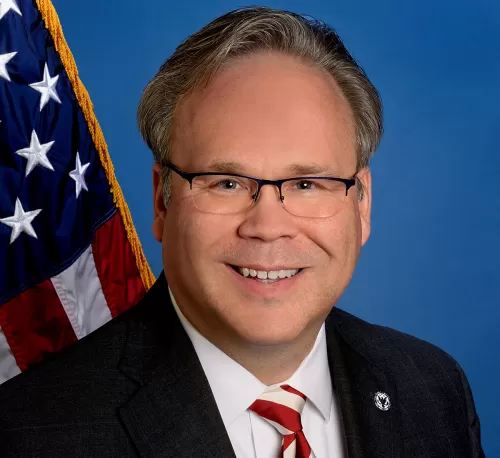NCUA Chairman Todd M. Harper.
As Prepared for Delivery on May 20, 2021
Thank you, Eugene, for the update on the performance of the Share Insurance Fund in the first quarter. And thank you, Myra and Andy, for that detailed overview of the Fund’s projected equity ratio for the first six months of 2021. I would also like to thank everyone on your teams for their work in bringing this important briefing to the Board today. I know that there were many time-consuming conversations and several long days to arrive at these estimates.
As expected, the credit union system saw continued elevated insured share growth in the first quarter of 2021, due primarily to the additional fiscal stimulus approved by Congress. This growth in share deposits continues to stress the Share Insurance Fund’s equity ratio, just as it does the net worth ratios of federally insured credit unions.
Although credit unions have provided $850 million to the Fund in the most recent semi-annual capital deposit true-up, staff is projecting the equity ratio for the Fund will be 1.22 percent in June, less than 2 basis points away from the statutory minimum, and 4 basis points below the equity ratio reported at the end of 2020.
I have come to think about the choppy wave pattern of the equity ratio rising and falling during the last several years as a stone skipping across the water. With each semi-annual true-up of a credit union’s one-percent capital deposit, the equity ratio rises just like the stone after each bounce off the top of a wave. But, no matter how far the stone travels, it continues to fall lower each time until it drops below the waterline because the forces pushing it down remain constant.
In the case of the Share Insurance Fund’s equity ratio, two forces remain constant — low interest rates and elevated insured share growth. Both will likely continue for the foreseeable future. Absent some unknown external event, these forces seem likely to eventually push the equity ratio below the 1.20 statutory minimum waterline required for establishing a restoration plan, especially because the low interest earned on the Fund’s deposits cannot keep pace with the system’s share growth. We should brace for that reality, but we should also remain calm.
Under the Federal Credit Union Act, if the equity ratio falls below 1.20 percent, or the NCUA Board projects it to do so within six months, then the Board is required to establish and implement a restoration plan within 90 days. The restoration plan would increase the equity ratio to at least the statutory minimum before the end of an eight-year period.
That plan may include premiums at some point, but it does not require us to charge credit unions immediately. We could take a wait-and-see approach. We could take the approach of small and steady premiums over several years. Or, we could charge a large premium up front.
The questions of “when” to charge premiums and “how much” depend very much on a variety of factors, including where the Board sets the desired normal operating level, the potential for future losses within the system, the capacity of credit unions to absorb a premium, and the need to protect the one-percent capitalization from any impairment, to name a few.
I vividly remember the 2008 financial crisis, when the agency projected that it would need to charge an immediate 69 basis point premium to recapitalize the Fund’s one-percent deposit. Ultimately, we avoided that fate because Congress created the Temporary Corporate Credit Union Stabilization Fund, which allowed the industry to absorb those losses over many years.
Because I do not want to put credit unions in a similar situation again, I have called for providing the agency with more flexibility to proactively manage the Share Insurance Fund, allowing us to build appropriate reserves in good times to cover losses in bad times. Think of it as repairing your roof before the rain begins to fall instead of patching it during the howling storm.
As I have noted before, charging a premium during a pandemic and economic downturn is not ideal. However, the Share Insurance Fund must be able to weather any potential challenges resulting from the pandemic’s economic fallout. And, as we know from experience, credit union performance will likely trail any improvement in the labor markets by up to two years.
Accordingly, system-wide delinquency rates, which remained low through the end of 2020, could begin to rise as forbearance programs and eviction moratoriums end. As the full extent of the pandemic’s economic disruptions become more apparent in the coming months, some credit unions will likely see their performance deteriorate. It is also possible there may be credit union failures and losses to the Fund.
Insuring the share deposits of members up to $250,000 and safeguarding the Share Insurance Fund from losses are two of the NCUA Board’s most important duties. We must make sure the Share Insurance Fund is strong enough to weather any stresses — failures and losses we know may be coming. I am committed to maintaining a steady course for the Fund as we navigate these unchartered waters.
That concludes my remarks. I now recognize Vice Chairman Hauptman for his observations and questions.




